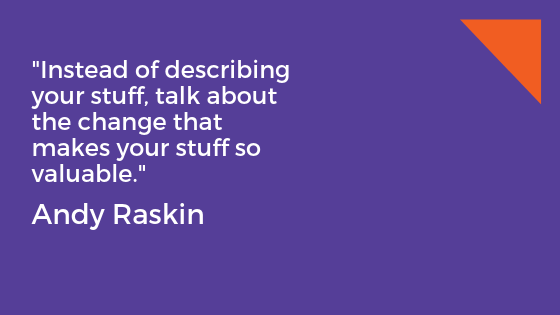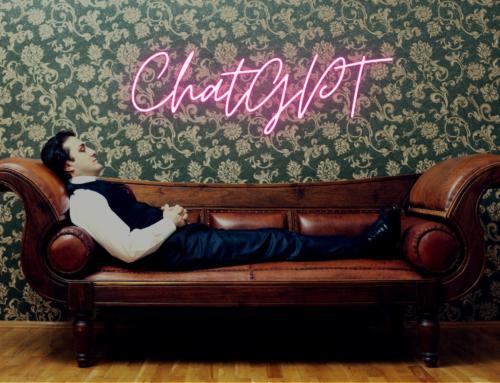It was summer, and I was in a world of hurt.
I was at the helm of my third venture.
I had just left my Q3 management offsite, and it ended in a shouting match.
Our management team all believed we’d invented the best thing since sliced bread for insurance underwriting. But, we just couldn’t agree why it wasn’t selling. Some thought it was our pitch, others thought it was just the slow industry or confusion with existing product categories in the market.
The truth is, we gave the best demos full of “oohs and aahs.”
Once, a female member of our sales team overhead a conversation taking place in the ladies room.
From her stall, she heard one woman say, “Oh my god, can you believe a product like that exists?”
“I really hope we get it!” her colleague piled on from her stall.
Well… they didn’t get it. Because their management just didn’t get it.
We were running low on cash and had to kickoff fundraising again in the fall. Our board was concerned we might not have a market. To make matters worse, employee morale was declining.
The stakes were high. If we didn’t figure out a way to get our target market to get it, we were dead.
Lucky for me, I was heading on vacation with my family. I took two books with me on that trip: Resonate, and The Presentation Secrets of Steve Jobs. As I sat by the pool with my favorite summer ale, I learned how Martin Luther King, Jr. started a movement, why Steve Jobs always started with “the promised land,” and how John F. Kennedy inspired a country to save the world by being the first to get a man on the moon. I learned the power of story and how to rewrite our story to help us get into the minds of our market.
And that we did.
We developed a new story (we called it “the Front Office”) that completely changed our trajectory for the better. It changed the way we would plan our product, how we marketed it, and how we sold it.
By the end of that year, we closed our biggest deals yet and raised a sizable round of financing.
We later grew to become the leader in the space.
After that experience, I really believe the key to successfully bringing a new product to market is telling the right story. I give this advice to first-time CEOs all the time.
“Get your story right first, then everything will follow,” I coach.
But, I didn’t really have a recipe book for them, until I went to a conference called Hypergrowth in 2017. One of the speakers was Andy Raskin. I call him the “story guy.” In his talk, he explained the importance of making your story a strategic weapon. I was hooked. Finally, a realistic approach to storytelling for tech entrepreneurs that goes beyond “happily ever after” and “here is why we are a cool new tech.”
His approach to storytelling is called a strategic narrative. He has helped over 100+ companies (including major brand names) learn how to stop describing their products and start talking about the change that makes their products so valuable.
I now recommend Andy’s method every chance I get.
I caught up with Andy recently to ask him a few questions and learn more about his practice.
JB: What exactly is a strategic narrative, and how is it different than other pitching or positioning frameworks?
Andy: The way most companies pitch/position is guided by a metaphor I call the “bragging doctor.” The prospect has a pain (problem), and you have a cure (solution) to relieve it. In this model, you distinguish yourself from the competition by making claims (bragging) about why your cure is so great (your “unique differentiators.”)
A strategic narrative is a framework for pitching/positioning that’s based on a very different metaphor. Instead of bragging about your solution, you tell a story about how the prospect’s world has changed in such a way that presents both great opportunity and great risk. I call this metaphor the humble awakener. Here, differentiation is based on prospects seeing you make sense of their world — in other words, your empathy — and they trust you more than folks that are bragging.
For the elements of a strategic narrative, check out the post I wrote a few years ago, The Greatest Sales Deck I’ve Ever Seen.
JB: Do strategic narratives apply to any product B2B or B2C?
Andy: I think they do. As Ben Horowitz says, “Your company story IS your company strategy.” That holds true for any business. That said, my focus is B2B, in part because that has been my experience, but also because aligning around the story seems especially valuable for large sales and marketing teams. By the way, I’ve also led workshops on strategic narrative for recruiting companies — I even led one at Uber to train engineers to more effectively pitch technical proposals.
JB: What is the hardest part of creating a narrative?
Andy: If it’s going to be simple and powerful, you’re going to have to leave stuff out — at least at the high level of your messaging. The hardest part is making peace with that.

JB: Why must CEOs lead the story effort?
Andy: In my experience, the narrative only takes hold — becomes the story everyone tells — if the CEO actually authors it. Not approves it, not signs off on it — actually writes it. Of course, my work is helping them do that, and part of that is getting the leadership team to weigh in as well. (For more on this, check out Why Story Is the CEO’s Job.)
JB: How often are your courses available, and where are they held?
Andy: Aside from on-site training that I do for larger teams, I lead a monthly workshop at General Assembly in San Francisco that anyone can attend, and I sometimes take it on the road to other cities (I’ll be doing one in NYC in October). (More info on those at andyraskin.com.)
JB: What is your favorite movie and why?
Andy: I really love 500 Days of Summer. We know we’ve got a great strategic narrative when clients nod their heads and say, “that’s right,” after they hear it. In the same way, when I saw that movie, all about pursuing a relationship that is so obviously doomed, I thought, “that’s right.”
I really enjoyed this opportunity to interview Andy, and I hope you were able to pull some actionable gems from it. If you want more, check out this post that Andy wrote about stories. It includes a great book list.



